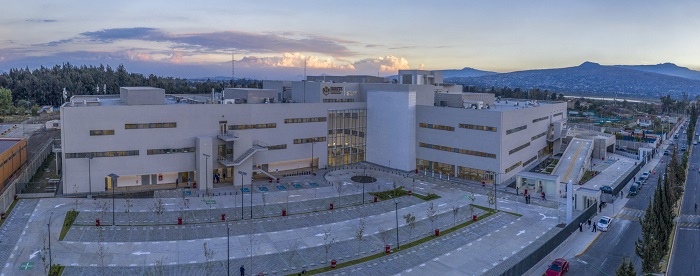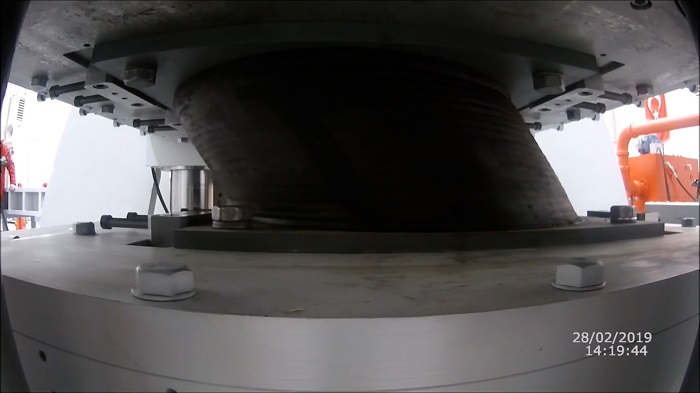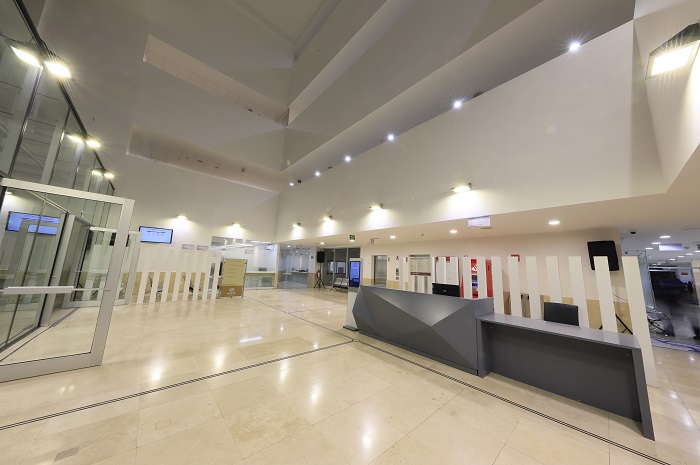We continue to reach new milestones in the field of sustainability. Tláhuac General Hospital has obtained LEED certification (Leadership in Energy and Environmental Design) and is among the first in the country to receive this distinction.
LEED is an internationally recognized green building certification system developed by the U.S. Green Building Council.
Certification requires compliance with specific requirements in several areas, such as site sustainability, water and energy efficiency, indoor environmental quality, and material sustainability.
The category obtained—LEED v4 BD+C: Healthcare level certified—combines traditional focus with several new developments, including light pollution, habitat protection, natural site hydrology, and the reuse of materials, among others.

The most modern in Latin America
In just 30 months, Sacyr has built the most important healthcare facility of the last 30 years in Mexico, and the most modern in Latin America: Tláhuac Hospital, in Mexico City.
In 2017, Sacyr won the bid to design, build, equip, maintain, and provide ancillary medical services to the general hospital. The facility, which opened in 2020, features 250 beds, 35 medical specialties, 42 examination rooms, and eight operating theaters, all equipped with the latest, cutting-edge technology. The main four-story building spans 35,000 m2.
The hospital serves to reinforce medical care and ensures the wellbeing of the city’s residents during the COVID-19 pandemic, given the shortage of general hospitalization and ICU beds, in compliance with sanitary requirements.

Anti-seismic building techniques
Construction involved innovative building techniques to provide the structure, with special characteristics to resist the movement of the Earth’s crust during tremors measuring up to 9.0 on the Richter scale.
Unlike buildings in other countries without seismic risk, Sacyr has applied an innovative system of seismic isolators using natural rubbers, lead cores, polished steel, and Teflon.
The facility’s construction materials—steel, concrete, metal facades, and solar control glass—will provide greater benefits throughout its useful life.
Tláhuac is the first seismically isolated hospital in Mexico. It uses new base isolation technology with shims between rubber isolators and laminated bearings (LRB and RB). This minimizes the transference of dynamic ground action to the building, thus reducing the risk of structural and non-structural damage.
Due to a regulatory change after the contract was signed, the implementation of this seismic isolation system was proposed to the contracting administration, which would guarantee the structural integrity of the new hospital.
To facilitate implementation of the seismic isolation system, analyses of the soil mechanics were expanded to include a second round of testing. As a result, the foundation was modified from a pad to a concrete trough, with a transfer slab on which the hospital could move.
In addition, an interior damage study was conducted, which analyzed which elements, systems, and equipment could be studied, given their relevance to the continuity of operations, patient safety, and potential harm to hospital users, in collaboration with the Universidad Autónoma Metropolitana.

Numerous measures were also taken to reduce consumption during construction, and to increase its useful life, including the use of low-emission vehicles, load centers for green vehicles, LED lighting, etc.
A re-engineering process was also required to define the new spaces, equipment, and mechanical guides. Despite the implementation of modifications, construction was completed within the established timeframe.
Geographic diversity
The Tláhuac Hospital project featured a multidisciplinary team with members from different countries, including Mexico, Spain, Colombia, Brazil, and Nicaragua. Companies from Spain, Germany, Brazil, Turkey, and the United States also participated in the project.
During the construction phase, more than 1,000 direct jobs and 2,300 indirect jobs were created, and 35% of the manual workers were from the local or surrounding areas. In addition, over 2,500 direct jobs were created for medical and nursing professionals.
Sacyr also launched a scholarship program with 30 annual undergraduate (Nursing) grants issued by the Fundación Marillac, and 48 high school and baccalaureate grants issued by the Fundación García Figueroa.
